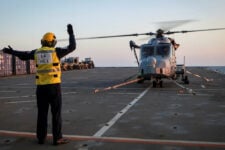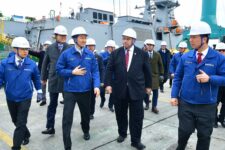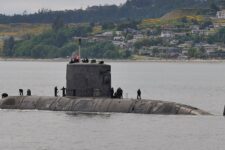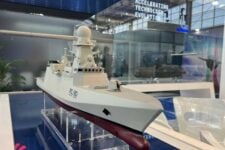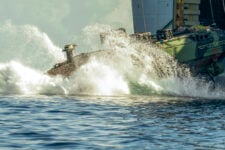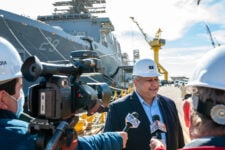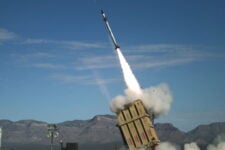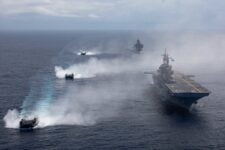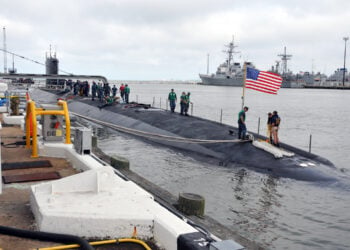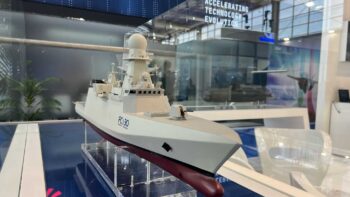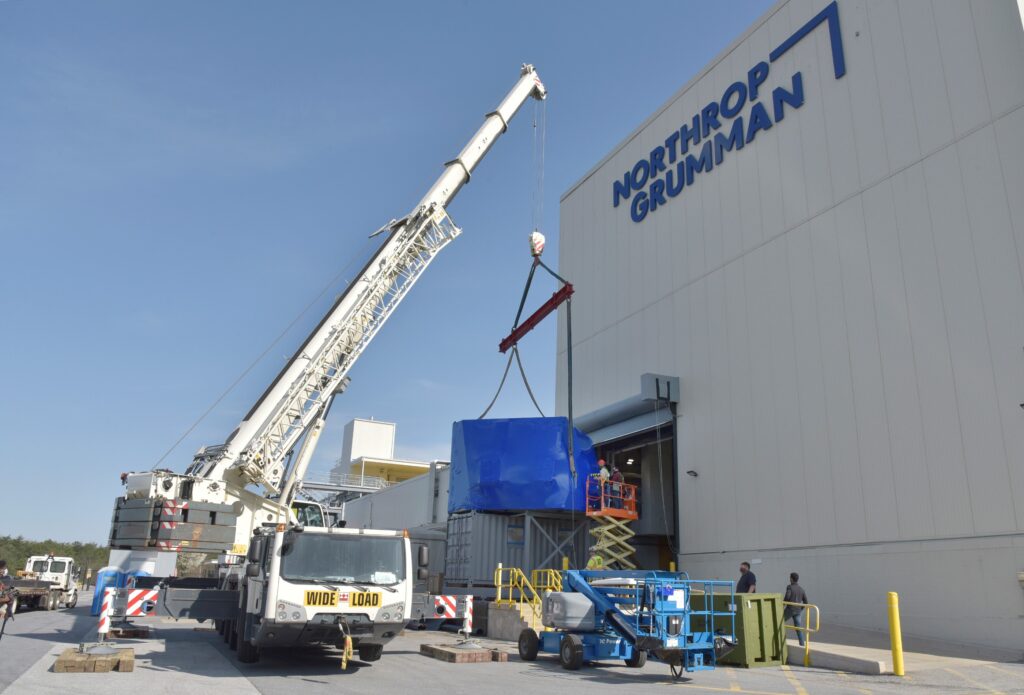
Northrop Grumman delivered the first SEWIP Block III jammer to the Navy earlier this year. (Photo courtesy of Northrop Grumman)
UPDATE: This article has been updated to reflect that Northrop Grumman has not received a contract to scale down SEWIP Block III for smaller ships, but that a company executive said the Navy is looking at how to make that possible.
WASHINGTON: Northrop Grumman and the Navy will be putting SEWIP Block III through its paces at Wallops Island over the next year, but the company is also exploring how the electronic warfare capability might become an integral piece of the Navy’s effort to connect its platforms, a company executive tells Breaking Defense.
SEWIP, formally called the Surface Electronic Warfare Improvement Program, is the Navy’s jammer program to protect its vessels from anti-ship missiles without having to expend millions of dollars of its own ammunition to defeat those missiles. The program is comprised of several blocks with each successive version containing incremental upgrades. Lockheed Martin and Northrop Grumman are under contract to produce and deliver Blocks II and III respectively.
This past year Northrop has been researching how SEWIP may be able to play a key role in Project Overmatch, the Navy-level effort to connect its various aerial, surface and subsurface platforms, an initiative personally directed by the Chief of Naval Operations Adm. Michael Gilday.
“Last year, we created a new set of communication wave forms and demonstrated using those waveforms being transmitted through those SEWIP apertures that we have,” said Mike Meaney, vice president of land and maritime sensors at Northrop Grumman. “We were able to … create new software and put new communication waveforms through the system and demonstrate a class a waveforms it could be critical to the Navy as they look at Project Overmatch.”
The SEWIP unit at Wallops Island will be used for initial operational test and evaluation, one of the major milestone activities all weapon systems must pass through right before fielding into the fleet and ultimately increased production. Northrop is under contract to deliver two more units later this year under a low-rate initial production contract.
If all goes to plan, the system will be installed on the Flight III Arleigh Burke-class destroyers, a critical surface combatant packed with the best technology the service can find in industry today.
As the Navy pursues its premiere concept of operations, Distributed Maritime Operations, SEWIP’s criticality to it is twofold. The first is its inherent capability to protect ships from missile attacks. The second is the work that both Northrop Grumman, the producer for Block III, and Lockheed Martin, which produces Block II, are doing to fit the system into other platforms.
Meaney said that in June the Navy issued a contract to Northrop to begin work on a technical data package that would scale up SEWIP Block II for larger deck ships such as aircraft carriers. He also said the Navy is looking at how to scale Block III down for smaller ships such as a frigate.
The Navy doesn’t have to look far for a precedent when it comes to scaling SEWIP to a different-sized platform. Lockheed, which in April received the full rate production contract for SEWIP Block II, successfully scaled down the EW capability for smaller vessels such as frigates and patrol craft with a variant it dubbed SEWIP Lite.
Aloha: Fixes ongoing, then Army’s new watercraft prototype is Hawaii bound for testing
“Everything that we can knock off that list we will do in the archipelago…because that allows us to do the tests in the environment that the vessel will operate in ultimately,” said Maj. Gen. Jered Helwig.

